This week Facebook has launched a major new product play, slotting an algorithmic dating service inside its walled garden as if that’s perfectly normal behavior for an ageing social network.
Insert your [dad dancing GIF of choice] right here.
Facebook getting into dating looks very much like a mid-life crisis — as a veteran social network desperately seeks a new strategy to stay relevant in an age when app users have largely moved on from social network ‘lifecasting’ to more bounded forms of sharing, via private messaging and/or friend groups inside dedicated messaging and sharing apps.
The erstwhile Facebook status update has long been usurped by the Snapchat (and now Instagram) Story as the social currency of choice for younger app users. Of course Facebook owns the latter product too, and has mercilessly cloned Stories. But it hardly wants its flagship service to just fade away into the background like the old fart it actually is in Internet age terms.
Not if it can reinvigorate the product with a new purpose — and so we arrive at online dating.
Facebook — or should that be ‘Datebook’ now?! — is starting its dating experiment in Colombia, as its beta market. But the company clearly has ambitious designs on becoming a major global force in the increasingly popular online dating arena — to challenge dedicated longtime players like eHarmony and OkCupid, as well as the newer breed of more specialized dating startups, such as female-led app, Bumble.
Zuckerberg is not trying to compete with online dating behemoth Tinder, though. Which Facebook dismisses as a mere ‘hook up’ app — a sub category it claims it wants nothing to do with.
Rather it’s hoping to build something more along the lines of ‘get together with friends of your friends who’re also into soap carving/competitive dog grooming/extreme ironing’ than, for e.g., the raw spank in the face shock of ‘Bang with Friends‘. (The latter being the experimental startup which tried, some six years ago, to combine Facebook and sex — before eventually exiting to a Singapore-based dating app player, Paktor, never to be heard of again. Or, well, not until Facebook decided to get into the dating game and reminded us all how we lol’d about it.)
Mark Zuckerberg’s company doesn’t want to get into anything smutty, though. Oh no, no, NO! No sex please, we’re Facebook!
Facebook Dating has been carefully positioned to avoid sounding like a sex app. It’s being flogged as a tasteful take on the online dating game, with — for instance — the app explicitly architected not to push existing friends together via suggestive matching (though you’ll just have to hope you don’t end up being algorithmically paired with any exes, which judging by Facebook’s penchant for showing users ‘photo memories’ of past stuff with exes may not pan out so well… ). And no ability to swap photo messages with mutual matches in case, well, something pornographic were to pass through.
Facebook is famously no fan of nudes. Unsurprisingly, then, nor is its buttoned up dating app. Only ‘good, old-fashioned wholesome’ text-based chat-up lines (related to ‘good clean pieces of Facebook content’) here please.
If you feel moved to text an up-front marriage proposal — feeling 100% confident in Facebook’s data scientists’ prowess in reading the social media tea leaves and plucking your future life partner out of the mix — its algorithms will probably smile on that though.
The company’s line is that dating will help fulfil its new mission of encouraging ‘time well spent’ — by helping people forge more meaningful (new) relationships thanks to the power of its network (and the data it sucks out of it).
This mission is certainly an upgrade on Facebook’s earlier and baser interest in just trying to connect every human on planet Earth to every other human on planet Earth in some kind of mass data-swinging orgy — regardless of the ethical and/or moral consequences (as Boz memorably penned it), as if it was trying to channel the horror-loving spirit of Pasolini’s Salò. Or, well, a human centipede.
But that was then. These days, in its mid teens, Facebook wants to be seen as grown up and a bit worth. So its take on dating looks a lot more ‘marriage material’ than ‘casual encounters’. Though, well, products don’t always pan out how their makers intend. So it might need to screw its courage to the sticking place and hope things don’t go south.
From the user perspective, there’s a whole other side here too though. Because given how much baggage inevitably comes with Facebook nowadays, the really burning question is whether any sensible person should be letting Mark Zuckerberg fire cupid’s arrows on their behalf?
He famously couldn’t tell malicious Kremlin propaganda from business as usual social networking like latte photos and baby pics — so what makes you think he’s going to be attuned to the subtle nuances of human chemistry?!
Here are just a few reasons why we think you should stay as far away from Facebook’s dalliance with dating as you possibly can…

- It’s yet another cynical data grab
Facebook’s ad-targeting business model relies on continuous people tracking to function — which means it needs your data to exist. Simply put: Your privacy is Facebook’s lifeblood. Dating is therefore just a convenient veneer to slap atop another major data grab as Facebook tries to find less icky ways to worm its way back and/or deeper into people’s lives. Connecting singles to nurture ‘meaningful relationships’ is the marketing gloss being slicked over its latest invitation to ask people to forget how much private information they’re handing it. Worse still, dating means Facebook is asking people to share even more intimate and personal information than they might otherwise willingly divulge — again with a company whose business model relies upon tracking everything everyone does, on or offline, within its walled garden or outside it on the wider web, and whether they’re Facebook a user or not.
This also comes at a time when users of Facebook’s eponymous social network have been showing signs of Facebook fatigue, and even changing how they use the service after a string of major privacy scandals. So Facebook doing dating also looks intended to function as a fresh distraction — to try to draw attention away from its detractors and prevent any more scales falling away from users’ eyes. The company wants to paper over growing scepticism about ad-targeting business models with algorithmic heart-shaped promises.
Yet the real underlying passion here is still Facebook’s burning desire to keep minting money off of your private bits and bytes. - Facebook’s history of privacy hostility shows it simply can’t be trusted
Facebook also has a very long history of being outright hostile to privacy — including deliberately switching settings to make previously private settings public by default (regulatory intervention has been required to push back against that ratchet) — so its claim, with Dating, to be siloing data in a totally separate bucket, and also that information shared for this service won’t be used to further flesh out user profiles or to target people with ads elsewhere across its empire should be treated with extreme scepticism.
Facebook also said WhatsApp users’ data would not be mingled and conjoined with Facebook user data — and, er, look what ended up happening there…!!
————————————————————————————————–>
And then there’s Facebook record of letting app developers liberally rip user data out of its platform — including (for years and years) ‘friend data’. Which almost sounded cosy. But Facebook’s friends data API meant that an individual Facebook user could have their data sucked out without even agreeing to a particular app’s ToS themselves. Which is part of the reason why users’ personal information has ended up all over the place — and in all sorts of unusual places. (Facebook not enforcing its own policies, and implementing features that could be systematically abused to suck out user data are among some of the many other reasons.)
The long and short history of Facebook and privacy is that information given to it for one purpose has ended up being used for all sorts of other things — things we likely don’t even know the half of. Even Facebook itself doesn’t know which is why it’s engaged in a major historical app audit right now. Yet this very same company now wants you to tell it intimate details about your romantic and sexual preferences? Uhhhh, hold that thought, truly. - Facebook already owns the majority of online attention — why pay the company any more mind? Especially as dating singles already have amazingly diverse app choice…
In the West there’s pretty much no escape from Facebook Inc. Not if you want to be able to use the social sharing tools your friends are using. Network effects are hugely powerful for that reason, and Facebook owns not just one popular and dominant social network but a whole clutch of them — given it also bought Instagram and WhatsApp (plus some others it bought and just closed, shutting down those alternative options). But online dating, as it currently is, offers a welcome respite from Facebook.
It’s arguably also no accident that the Facebook-less zone is so very richly served with startups and services catering to all sorts of types and tastes. There are dating apps for black singles; matchmaking services for Muslims; several for Jewish people; plenty of Christian dating apps; at least one dating service to match ex-pat Asians; another for Chinese-Americans; queer dating apps for women; gay dating apps for men (and of course gay hook up apps too), to name just a few; there’s dating apps that offer games to generate matches; apps that rely on serendipity and location to rub strangers together via missed connections; apps that let you try live video chats with potential matches; and of course no shortage of algorithmic matching dating apps. No singles are lonely for dating apps to try, that’s for sure.
So why on earth should humanity cede this very rich, fertile and creative ‘stranger interaction’ space, which caters to singles of all stripes and fancies, to a social network behemoth — just so Facebook can expand its existing monopoly on people’s attention?
Why shrink the luxury of choice to give Facebook’s business extra uplift? If Facebook Dating became popular it would inexorably pull attention away from alternatives — perhaps driving consolidation among a myriad of smaller dating players, forcing some to band together to try to achieve greater scale and survive the arrival of the 800lb Facebook gorilla. Some services might feel they have to become a bit less specialized, pushed by market forces to go after a more generic (and thus larger) pool of singles. Others might find they just can’t get enough niche users anymore to self-sustain. The loss of the rich choice in dating apps singles currently enjoy would be a crying shame indeed. Which is as good a reason as any to snub Facebook’s overtures here. - Algorithmic dating is both empty promise and cynical attempt to humanize Facebook surveillance
Facebook typically counters the charge that because it tracks people to target them with ads its in the surveillance business by claiming people tracking benefits humanity because it can serve you “relevant ads”. Of course that’s a paper thin argument since all display advertising is something no one has chosen to see and therefore is necessarily a distraction from whatever a person was actually engaged with. It’s also an argument that’s come under increasing strain in recent times, given all the major scandals attached to Facebook’s ad platform, whether that’s to do with socially divisive Facebook ads, or malicious political propaganda spread via Facebook, or targeted Facebook ads that discriminate against protected groups, or Facebook ads that are actually just spreading scams. Safe to say, the list of problems attached to its ad targeting enterprise is long and keeps growing.
But Facebook’s follow on claim now, with Dating and the data it intends to hold on people for this matchmaking purpose, is it has the algorithmic expertise to turn a creepy habit of tracking everything everyone does into a formula for locating love.
So now it’s not just got “relevant” ads to sell you; it’s claiming Facebook surveillance is the special sauce to find your Significant Other!

Frankly, this is beyond insidious. (It is also literally a Black Mirror episode — and that’s supposed to be dysfunctional sci-fi.) Facebook is moving into dating because it needs a new way to package and sell its unpleasant practice of people surveillance. It’s hoping to move beyond its attempt at normalizing its business line (i.e. that surveillance is necessary to show ads that people might be marginally more likely to click on) — which has become increasingly problematic as its ad platform has been shown to be causing all sorts of knock-on societal problems — by implying that by letting Facebook creep on you 24/7 it could secure your future happiness because its algorithms are working to track down your perfect other half — among all those 1s and 0s it’s continuously manhandling.
Of course this is total bunkum. There’s no algorithmic formula to determine what makes one person click with another (or not). If there was humans would have figured it out long, long ago — and monetized it mercilessly. (And run into all sorts of horrible ethical problems along the way.)
Thing is, people aren’t math. Humans cannot be made to neatly sum to the total of their collective parts and interests. Which is why life is a lot more interesting than the stuff you see on Facebook. And also why there’s a near infinite number of dating apps out there, catering to all sorts of people and predilections.
Sadly Facebook can’t see that. Or rather it can’t admit it. And so we get nonsense notions of ‘expert’ algorithmic matchmaking and ‘data science’ as the underpinning justification for yet another dating app launch. Sorry but that’s all just marketing.
The idea that Facebook’s data scientists are going to turn out to be bullseye hitting cupids is as preposterous as it is ridiculous. Like any matchmaking service there will be combinations thrown up that work and plenty more than do not. But if the price of a random result is ceaseless surveillance the service has a disproportionate cost attached to it — making it both an unfair and an unattractive exchange for the user. And once again people are being encouraged to give up far more than they’re getting in return.
If you believe that finding ‘the one’ will be easier if you focus on people with similar interests to you or who are in the same friend group there’s no shortage of existing ‘life avenues’ you can pursue without having to resort to Facebook Dating. (Try joining a club. Or going to your friends’ parties. Or indeed taking your pick from the scores of existing dating apps that already offer interest-based matching.)
Equally you could just take a hike up a mountain and meet your future wife at the top (as one couple I know did). Safe to say, there’s no formula to love. And thankfully so. Don’t believe anyone trying to sell you a dating service with the claim their nerdtastic data scientists will hook you up good and proper.
Facebook’s chance of working any ‘love magic’ will be as good/poor as the next app-based matchmaking service. Which is to say it will be random. There’s certainly no formula to be distilled beyond connecting ‘available to date’ singles — which dating apps and websites have been doing very well for years and years and years. No Facebook dates necessary.
The company has little more to offer the world of online dating than, say, OkCupid, which has scale and already combines the location and stated interests of its users in an attempt to throw up possible clicks. The only extra bit is Facebook’s quasi-bundling of Events into dating, as a potential avenue to try and date in a marginally more informal setting than agreeing to go on an actual date. Though, really, it just sounds like it might be more awkward to organize and pull off.
Facebook’s generic approach to dating is also going to offer much less for certain singles who benefit from a more specialized and tailored service (such as a female-focused player like Bumble which has created a service to cater to women’s needs; or, indeed, any of the aforementioned community focused offerings cited above which help people meet other likeminded singles).
Facebook appears to believe that size matters in dating. And seems to want to be a generic giant in a market that’s already richly catering to all sorts of different communities. For many singles that catch-all approach is going to earn it a very hard left swipe. - Dating takes resource and focus away from problems Facebook should actually be fixing
Facebook’s founder made ‘fixing Facebook’ his personal priority this year. Which underlines quite how many issues the company has smashing through its plate. We’re not talking little bug fixes. Facebook has a huge bunch of existentially awful hellholes burning through its platform and punching various human rights in the process. This is not at all trivial. Some really terrible stuff has been going on with its platforms acting as the conduit.
Earlier this year, for instance, the UN blasted Facebook saying its platform had became a “beast” in Myanmar — weaponized and used to accelerate ethnic violence against the Rohingya Muslim minority.
Facebook has admitted it did not have enough local resource to stop its software being used to amplify ethnic hate and violence in the market. Massacres of Rohingya refuges have been described by human rights organizations as a genocide.
And it’s not an isolated instance. In the Philippines the country has recently been plunged into a major human rights crisis — and the government there, which used Facebook to help get elected, has also been using Facebook to savage its critics at the same time as carrying out thousands of urban killings in a bloody so-called ‘war on drugs’.
In India, Facebook’s WhatsApp messaging app has been identified as a contributing factor in multiple instances of mob violence and killings — as people have been whipped up by lies spread like lightning via the app.
Set against such awful problems — where Facebook’s products are at very least not helping — we now see the company ploughing resource into expanding into a new business area, and expending engineering resource to build a whole new interface and messaging system (the latter to ensure Facebook Dating users can only swap texts, and can’t send photos or videos because that might be a dick pic risk).
So it’s a genuine crying shame that Facebook did not pay so much close attention to goings on in Myanmar — where local organizations have long been calling for intelligent limits to be built in to its products to help stop abusive misuse.
Yet Facebook only added the option to report conversations in its Messenger app this May.
So the sight of the company expending major effort to launch a dating product at the same time as it stands accused of failing to do enough to prevent its products from being conduits for human rights abuses in multiple markets is ethically uncomfortable, to say the least.
Prospective users of Facebook Dating might therefore feel a bit queasy to think that their passing fancies have been prioritized by Zuckerberg & co over and above adding stronger safeguards and guardrails to the various platforms they operate to try to safeguard humans from actual death in other corners of the globe. - By getting involved with dating, Facebook is mixing separate social streams
Talking of feeling queasy, with Facebook Dating the company is attempting to pull off a tricky balancing act of convincing existing users (many of whom will already be married and/or in a long term relationship) that it’s somehow totally normal to just bolt on a dating layer to something that’s supposed to be a generic social network.
All of a sudden a space that’s always been sold — and traded — as a platonic place for people to forge ‘friendships’ is suddenly having sexual opportunity injected into it. Sure, the company is trying to keep these differently oriented desires entirely separate, by making the Dating component an opt-in feature that lurks within Facebook (and where (it says) any activity is siloed and kept off of mainstream Facebook (at least that’s the claim)). But the very existence of Facebook Dating means anyone in a relationship who is already on Facebook is now, on one level, involved with a dating app company.
Facebook users may also feel they’re being dangled the opportunity to sign up to online dating on the sly — with the company then committed itself to being the secret-keeping go-between ferrying any flirtatious messages they care to send in a way that would be difficult for their spouse to know about, whether they’re on Facebook or not.
How comfortable is Facebook going to be with being a potential aid to adultery? I guess we’ll have to wait and see how that pans out. As noted above, Facebook execs have — in the past — suggested the company is in the business of ‘connecting people, period’. So there’s perhaps a certain twisted logic working away as an undercurrent and driving its impulse to push for ever more human connections. But the company could be at risk of applying its famous “it’s complicated” relationship status to itself with the dating launch — and then raining complicated consequences down upon its users as a result. (As, well, it so often seems to do in the name of expanding its own business.)
So instead of ‘don’t mix the streams’, with dating we’re seeing Facebook trying to get away with running entirely opposite types of social interactions in close parallel. What could possibly go wrong?! Or rather what’s to stop someone in the ‘separate’ Facebook dating pool trying to Facebook-stalk a single they come across there who doesn’t responded to their overtures? (Given Facebook dating users are badged with their real Facebook names there could easily be user attempts to ‘cross over’.)
And if sentiments from one siloed service spill over into mainstream Facebook things could get very messy indeed — and users could end up being doubly repelled by its service rather than additionally compelled. The risk is Facebook ends up fouling not feathering its own nest by trying to combine dating and social networking. (This less polite phrase also springs to mind.) - Who are you hoping to date anyway?!
Outside emerging markets Facebook’s growth has stalled. Even social networking’s later stage middle age boom looks tapped out. At the same time today’s teens are not at all hot for Facebook. The youngest web users are more interested in visually engaging social apps. And the company will have its work cut out trying to lure this trend-sensitive youth crowd. Facebook dating will probably sound like a bad joke — or a dad joke — to these kids.
Going up the age range a bit, the under ~35s are hardly enamoured with Facebook either. They may still have a profile but also hardly think Facebook is cool. Some will have reduced their usage or even taken a mini break. The days of this age-group using Facebook to flirt with old college classmates are as long gone as sending a joke Facebook poke. Some are deleting their Facebook account entirely — and not looking back. Is this prime dating age-group suddenly likely to fall en masse for Facebook’s love match experiment? It seems doubtful.
Facebook account entirely — and not looking back. Is this prime dating age-group suddenly likely to fall en masse for Facebook’s love match experiment? It seems doubtful.
And it certainly looks like no accident Facebook is debuting Dating outside the US. Emerging markets, which often have young, app-loving populations, probably represent its best chance at bagging the critical mass of singles absolutely required to make any dating product even vaguely interesting.
But in its marketing shots for the service Facebook seems to be hoping to attract singles in the late twenties age-range — dating app users who are probably among the ficklest, trickiest people for Facebook to lure with a late-stage, catch-all and, er, cringey proposition.
After that, who’s left? Those over 35s who are still actively on Facebook are either going to be married — and thus busy sharing their wedding/baby pics — and not in the market for dating anyway; or if they are single they may be less inclined towards getting involved with online dating vs younger users who are now well accustomed to dating apps. So again, for Facebook, it looks like diminishing returns up here.
And of course a dating app is only as interesting and attractive as the people on it. Which might be the most challenging hurdle for Facebook to make a mark on this well-served playing field — given its eponymous network is now neither young nor cool, hip nor happening, and seems to be having more of an identity crisis with each passing year.
Perhaps Facebook could carve out a dating niche for itself among middle-age divorcees — by offering to digitally hand-hold them and help get them back into the dating game. (Although there’s zero suggestion that’s what it’s hoping to do with the service it debuted this week.)
If Zuckerberg really wants to bag the younger singles he seems most interested in — at least judging by Facebook Dating’s marketing — he might have been better off adding a dating stream to Instagram.
I mean, InstaLovegram almost sounds like it could be a thing.
from Social – TechCrunch https://ift.tt/2QQADjK Seven reasons not to trust Facebook to play cupid Natasha Lomas https://ift.tt/2xF7Beh
via IFTTT





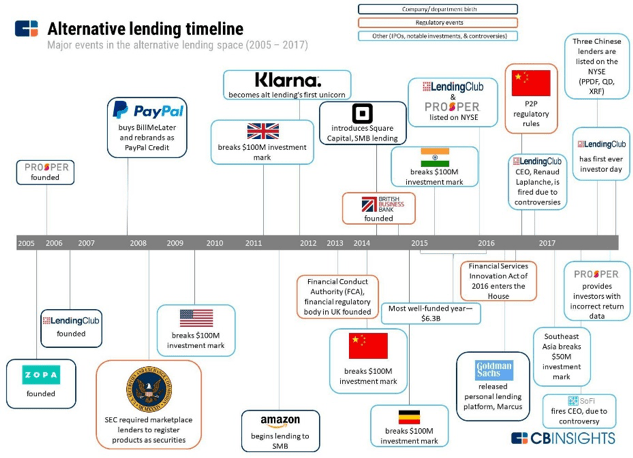
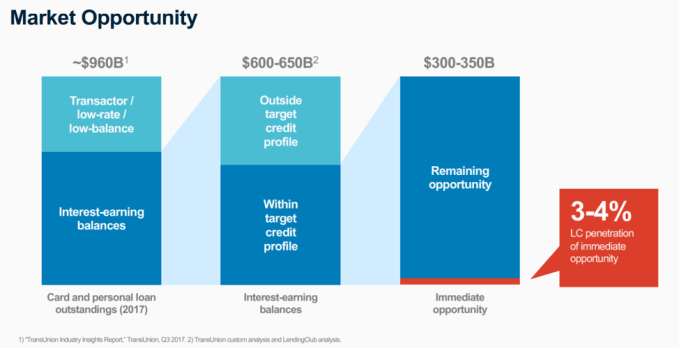

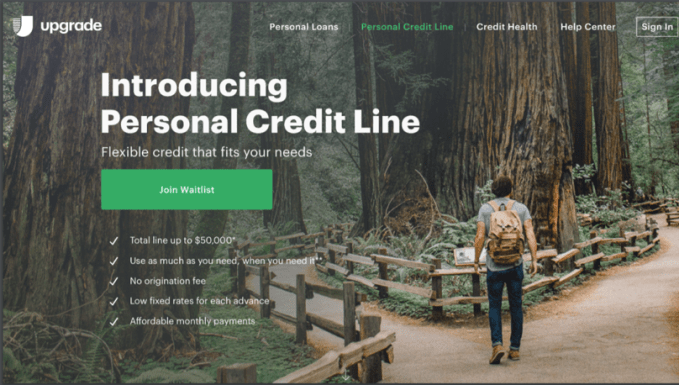
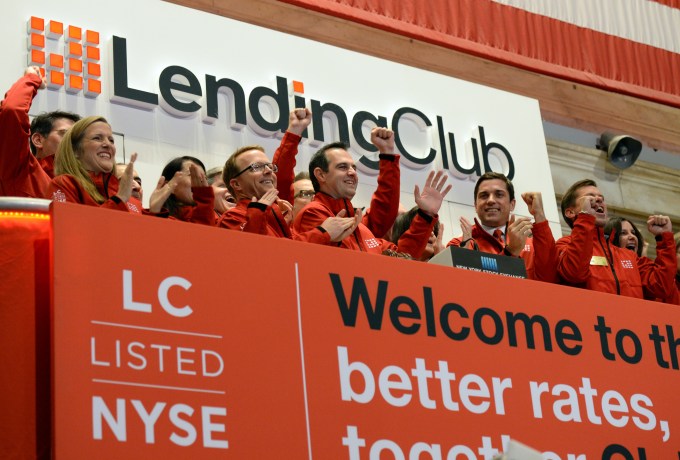

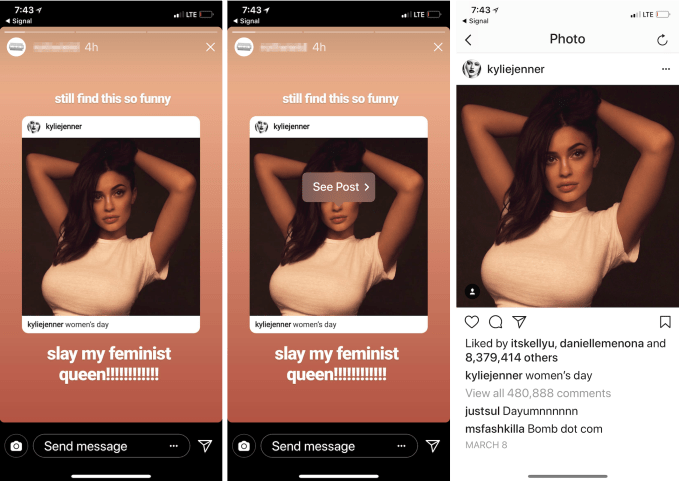
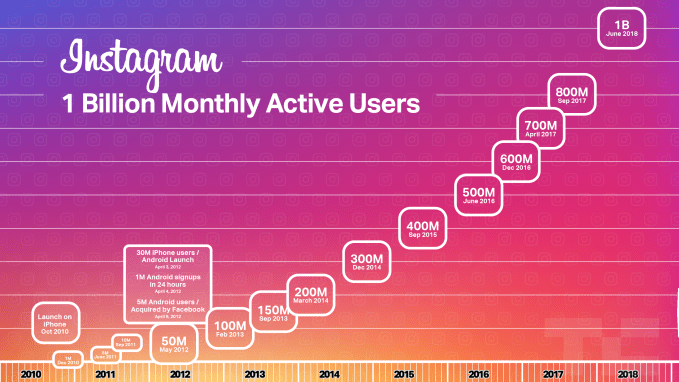
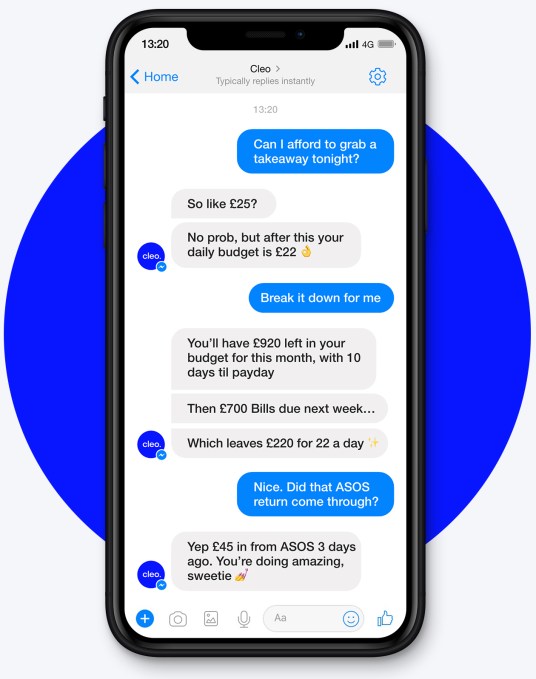 The European venture capital firm, which has previously invested in
The European venture capital firm, which has previously invested in 
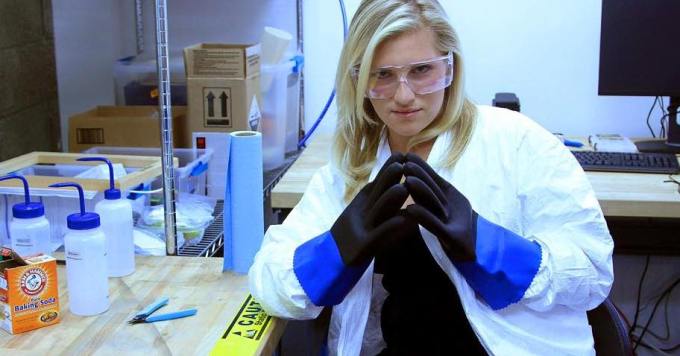



 (@hunterwalk)
(@hunterwalk) 













